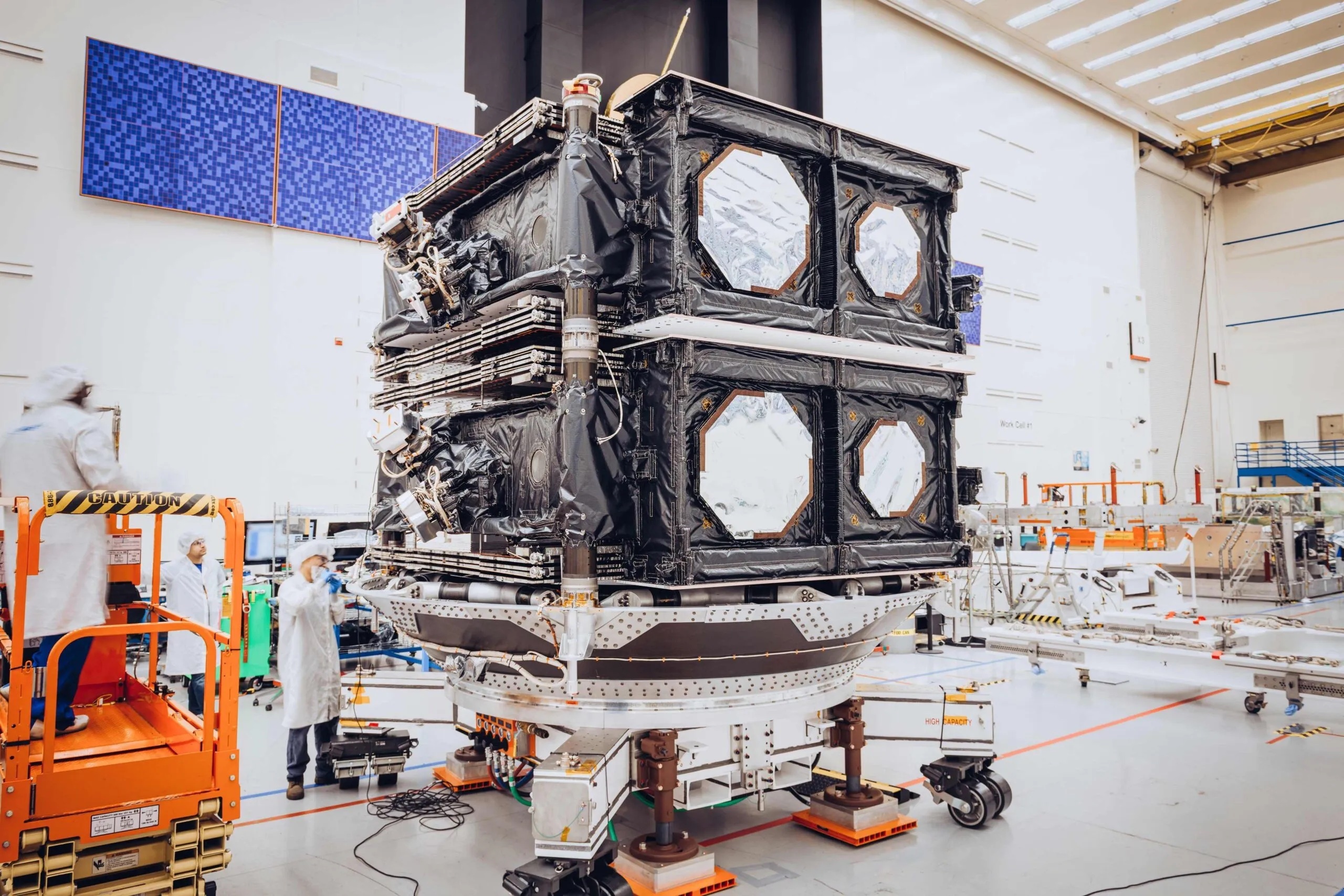6.05.2023
Boeing preparing to ship milestone O3b mPower satellites for launch

TAMPA, Fla. — The last pair of satellites SES needs to provide upgraded broadband services from medium Earth orbit (MEO) have completed tests ahead of an early June launch, SES said during financial results May 4.
Boeing is preparing to ship the fifth and sixth O3b mPower satellites this month to Florida for launch on a SpaceX Falcon 9, SES CEO Steve Collar said, putting the operator on track to deploy initial services late in the third quarter of 2023.
The first pair were launched in December on a Falcon 9 and are still undergoing on-orbit health checks. The second pair launched on a Falcon 9 on April 28 and are several months away from climbing to their final MEO positions with onboard all-electric propulsion.
Boeing is under contract to build 11 O3b mPower satellites in total, each designed to scale up to multiple gigabits per second of throughput — roughly 10 times more than the original O3b constellation.
Only six are needed to for O3b mPower to provide commercial service, and Collar said SES could provide beta services with just two or four satellites for customers comfortable with service gaps.
Bringing O3b mPower to market is one of two main priorities for the operator this year, Collar said, following satellite production issues that derailed original plans to begin deploying the constellation in 2021.
The other priority is vacating U.S. C-band spectrum that the FCC auctioned off to 5G wireless operators. SES stands to reap a $3 billion windfall if it meets a Dec. 5 deadline for clearing the spectrum by migrating broadcast customers to five new geostationary satellites funded by the auction’s proceeds.
The last two satellites in SES’s plan to relocate affected customers to a smaller swath of C-band launched March 17 on a Falcon 9.
SES said it has moved more than 95% of these satellite transmissions to date, and has installed over 90% of the filters that ground antennas need to avoid interfering with the 5G services.
Robust results
SES’s financial results reflected an ongoing decline in satellite TV, and the growing importance of connectivity services for operators in this market.
The Luxembourg-based satellite operator recorded 242 million euros ($267 million) in video revenue for the three months ending March 31, down 8.3% compared with the same period in 2022.
However, revenue for its networks division climbed 2.9% to 248 million euros. Declines in the operator’s government and fixed data businesses in this division were offset by a 14.4% rise in revenue in mobile services.
SES reported total revenues for the quarter up 9.6% year-on-year to 490 million euros, boosted by sales from Leonardo DRS Global Enterprise Solutions (GES), a satcoms provider to the U.S. government acquired last year.
Adjusted EBITDA, or earnings before interest, taxes, depreciation, and amortization, declined 3.2% to 265 million euros.
While Collar said it was too early to give an update on merger talks with rival satellite operator Intelsat March 29, he reiterated his view that consolidation is broadly a good thing for the industry.
But “at the end of the day it has to make sense for the companies involved,” he added.
Collar said it is also too early to discuss investments SES might make as part of a partnership announced May 2 to bid for a role in developing IRIS², Europe’s proposed multi-orbit connectivity constellation also known as Infrastructure for Resilience, Interconnectivity and Security by Satellite.
IRIS² will likely first seek to leverage existing space assets before deploying new infrastructure designed to be fully operational in 2027. However, Collar said SES does not see a need to set aside any capacity from O3b mPower for this.
Quelle: SN

